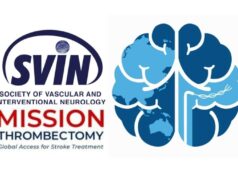
Time is of the essence when treating head injuries to avoid potentially serious complications, including disability or death, says the National Institute for Health and Care Excellence (NICE). Its updated guidance on the issue emphasises the importance of early detection and prompt treatment for both children and adults who have suffered trauma to the head.
Mark Baker, director of the Centre for Clinical Practice at NICE says: “Over the past year media attention has focused on several high-profile people who have suffered potentially serious head injuries but waited several hours before seeking medical attention. These incidents should act as a warning that any head injury needs to be taken seriously and treated quickly.
Although a person may appear fine at first, it is not uncommon for symptoms of a head injury to affect them some hours after the trauma took place. This updated guidance will ensure the NHS has the necessary processes in place to diagnose and treat head injuries in a timely manner, which will play a major part in saving the lives of people who have suffered a serious blow to the head.”
James Robson, national team doctor for the Scottish Rugby Union and head doctor during the British and Irish Lions tour to Australia last year, backs the updated guideline states: “The NICE 2014 guidelines on head injury are a welcome release at a time of unprecedented activity on this issue in sport both nationally and internationally.
“The guidelines should be a required read for all professionals involved in the management of head injury before a patient is taken to hospital and once they are there; and in particular for myself and other colleagues, in the sporting arena.
“This document will form a reference source for evidence-based assessment and care of some of our most vulnerable patients, and will add great value to the debate, education, and research in this important area. The guidance on head injury triage, assessment, investigation, and early management should form the basis for the development of specific local protocols, ensuring that best practice and care is available to all, wherever their need may arise. We only have one head, use it not lose it.”
Key changes and updates in the guidance include:
- Ambulance crews should take patients with a head injury straight to a hospital with resuscitation facilities where doctors and nurses can investigate and treat their injuries
- Children and adults who have suffered a head injury but also begin to show particular signs that the injury may be serious or potentially life threatening (such as seizures, suspected skull fracture, repeated vomiting or loss of consciousness) should be undergo a computed tomography (CT) brain scan within one hour. Others should be scanned within four to eight hours of their injury, depending on its severity
- A hospital doctor or specialist who is trained in safeguarding (for example, potential abuse) should be involved in checking any patient with a head injury presenting to accident and emergency, especially if it is a possible non-accidental injury or a vulnerable person has been injured
- Doctors and nurses should give verbal and printed advice to patients, with any type of head injury who are discharged from an emergency department or observation ward, and their families and carers. Any advice should be accessible and appropriate to the patients’ age
“Head injuries are the most common cause of death and disability in people up to the age of 40. How quickly a person receives treatment for their head injury can make all the difference to their life,” comments Fiona Lecky, consultant in emergency medicine at the University of Sheffield, University of Manchester and Salford Royal NHS Foundation Trust and Chair of the GDG, UK. “New technology and techniques means the NHS is able to assess people more quickly and care can be managed in more specialist centres. This updated guideline reflects the very best practice available, which I have no doubt will result in fewer people dying from their head injury.”
Peter McCabe, chief executive of Headway—the brain injury association, adds: “We welcome these updated guidelines, particularly as they reinforce the need for high-quality written discharge information to be given to patients upon leaving hospital following a head injury.
“The unpredictability of head injuries demands the highest level of clinical excellence in the early stages of assessment and treatment and we hope these updated guidelines will ensure that is the case for all head injury patients.”
The updated guideline on head injury is primarily aimed at hospital doctors, nurses and ambulance crews, is now available from the NICE website.













